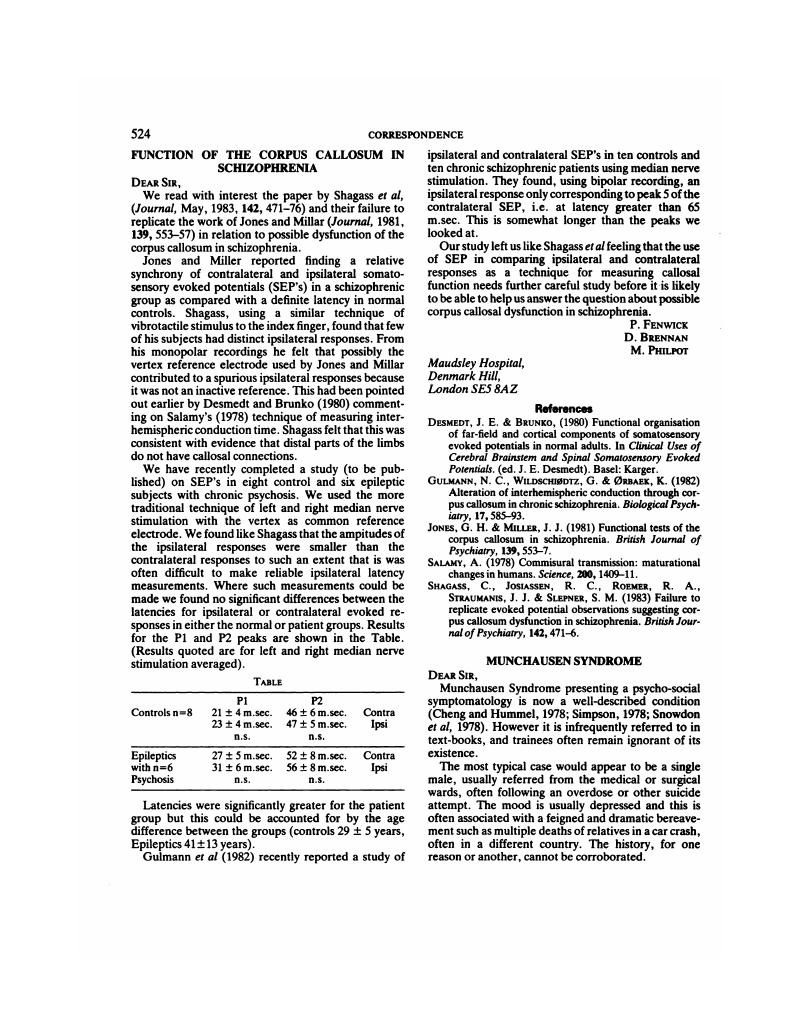Crossref Citations
This article has been cited by the following publications. This list is generated based on data provided by Crossref.
Cooper, J. E.
Andrews, H.
and
Barber, C.
1985.
Stable Abnormalities in the Lateralisation of early Cortical Somatosensory Evoked Potentials in Schizophrenic Patients.
British Journal of Psychiatry,
Vol. 146,
Issue. 6,
p.
585.
Catts, Stanley V.
Ward, Philip B.
Garvey, John R.
Fox, Allison M.
Michie, Patricia T.
and
McConaghy, Neil
1988.
Somatosensory Evoked Potential Activity: A Measure of Interhemispheric Transfer in Schizophrenia?.
International Journal of Neuroscience,
Vol. 38,
Issue. 1-2,
p.
131.
Coger, Roger W.
and
Serafetinides, E.A.
1990.
Schizophrenia, corpus callosum, and interhemispheric communication: A review.
Psychiatry Research,
Vol. 34,
Issue. 2,
p.
163.
Furlong, Paul
Barczak, Paul
Hayes, Gwilym
and
Harding, Graham
1990.
Somatosensory Evoked Potentials in Schizophrenia a Lateralisation Study.
British Journal of Psychiatry,
Vol. 157,
Issue. 6,
p.
881.
Woodruff, P. W. R.
Pearlson, G. D.
Geer, M. J.
Barta, P. E.
and
Chilcoat, H. D.
1993.
A computerized magnetic resonance imaging study of corpus callosum morphology in schizophrenia.
Psychological Medicine,
Vol. 23,
Issue. 1,
p.
45.






eLetters
No eLetters have been published for this article.